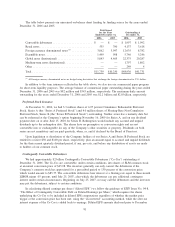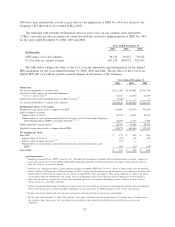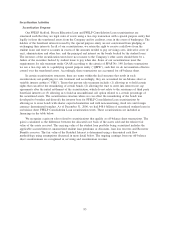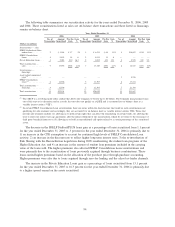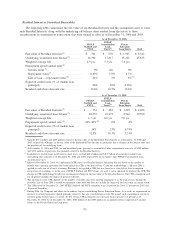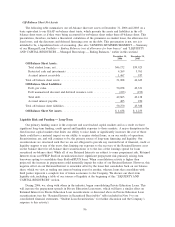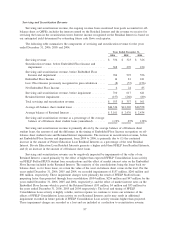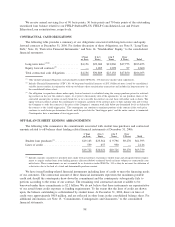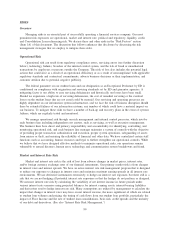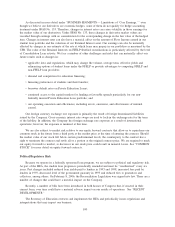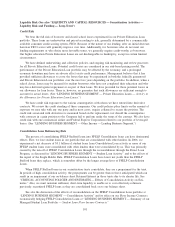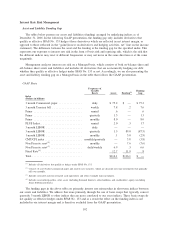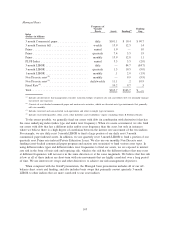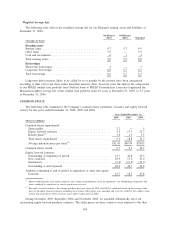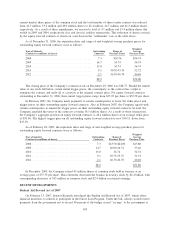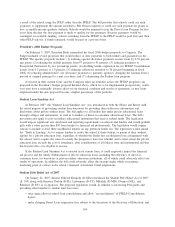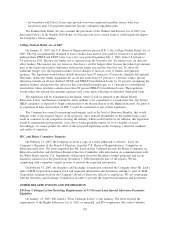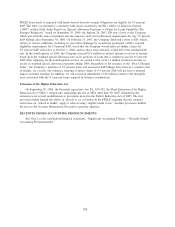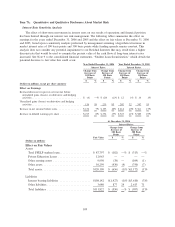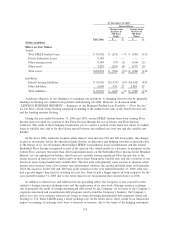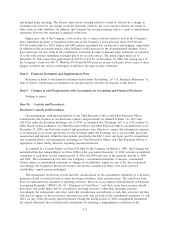Sallie Mae 2006 Annual Report Download - page 102
Download and view the complete annual report
Please find page 102 of the 2006 Sallie Mae annual report below. You can navigate through the pages in the report by either clicking on the pages listed below, or by using the keyword search tool below to find specific information within the annual report.Liquidity Risk (See also “LIQUIDITY AND CAPITAL RESOURCES — Securitization Activities —
Liquidity Risk and Funding — Long-Term”)
Credit Risk
We bear the full risk of borrower and closed school losses experienced in our Private Education Loan
portfolio. These loans are underwritten and priced according to risk, generally determined by a commercially
available consumer credit scoring system, FICO. Because of the nature of our lending, after an initial decrease,
borrower FICO scores will generally improve over time. Additionally, for borrowers who do not meet our
lending requirements or who desire more favorable terms, we generally require credit-worthy co-borrowers.
Our higher education Private Education Loans are not dischargeable in bankruptcy, except in certain limited
circumstances.
We have defined underwriting and collection policies, and ongoing risk monitoring and review processes
for all Private Education Loans. Potential credit losses are considered in our risk-based pricing model. The
performance of the Private Education Loan portfolio may be affected by the economy, and a prolonged
economic downturn may have an adverse effect on its credit performance. Management believes that it has
provided sufficient allowances to cover the losses that may be experienced in both the federally guaranteed
and Private Education Loan portfolios over the next two years depending on the portfolio. In addition, when a
school closes, losses may be incurred for student borrowers who have not completed their education and who
may have deferred against repayment or on part of their loans. We have provided for these potential losses in
our allowance for loan losses. There is, however, no guarantee that such allowances are sufficient enough to
account for actual losses. (See “LENDING BUSINESS SEGMENT — Private Education Loans — Activity in
the Allowance for Private Education Loan Losses.”)
We have credit risk exposure to the various counterparties with whom we have entered into derivative
contracts. We review the credit standing of these companies. Our credit policies place limits on the amount of
exposure we may take with any one party and in most cases, require collateral to secure the position. The
credit risk associated with derivatives is measured based on the replacement cost should the counterparties
with contracts in a gain position to the Company fail to perform under the terms of the contract. We also have
credit risk with one commercial airline and Federal Express Corporation related to our portfolio of leveraged
leases. (See “LENDING BUSINESS SEGMENT — Other Income — Lending Business Segment.”)
Consolidation Loan Refinancing Risk
The process of consolidating FFELP Stafford loans into FFELP Consolidation loans can have detrimental
effects. First, we lose student loans in our portfolio that are consolidated with other lenders. In 2006, we
experienced a net decrease of $3.1 billion of student loans from Consolidation Loan activity as more of our
FFELP student loans were consolidated with other lenders than were consolidated by us. This was primarily
caused by the run-off of FFELP Consolidation Loans through the reconsolidation through the Direct Loan
Program, as discussed in “LENDING BUSINESS SEGMENT — Student Loan Activity” and to the effects of
the repeal of the Single Holder Rule. FFELP Consolidation Loans have lower net yields than the FFELP
Stafford loans they replace, which is somewhat offset by the longer average lives of FFELP Consolidation
Loans.
When FFELP Stafford loans in our securitization trusts consolidate, they are a prepayment for the trust.
In periods of high consolidation activity, the prepayments can be greater than we have anticipated which can
result in an impairment of our on-balance sheet Retained Interest in those trusts due to its shorter life. See
“CRITICAL ACCOUNTING POLICIES AND ESTIMATES — Effects of Consolidation Activity on Esti-
mates.” Also, we must maintain sufficient, short-term liquidity to enable us to cost-effectively refinance
previously securitized FFELP loans as they are consolidated back on to our balance sheet.
See also the discussion of the effects of reconsolidation on the FFELP Consolidation Loan portfolio at
“LENDING BUSINESS SEGMENT — Consolidation Activity” and its effect on our Floor Income Contracts
economically hedging FFELP Consolidation Loans at “LENDING BUSINESS SEGMENT — Summary of our
Managed Student Loan Portfolio — Student Loan Floor Income Contracts.”
101


